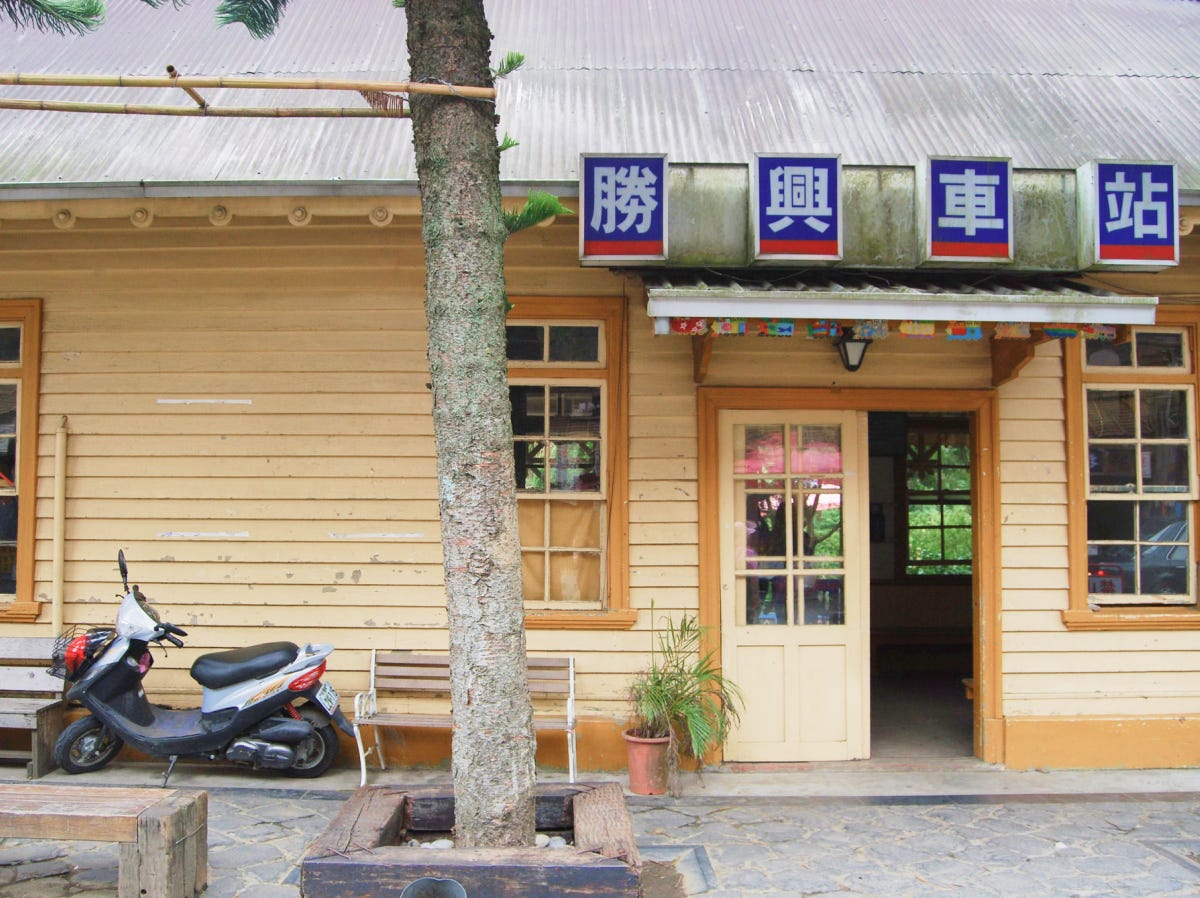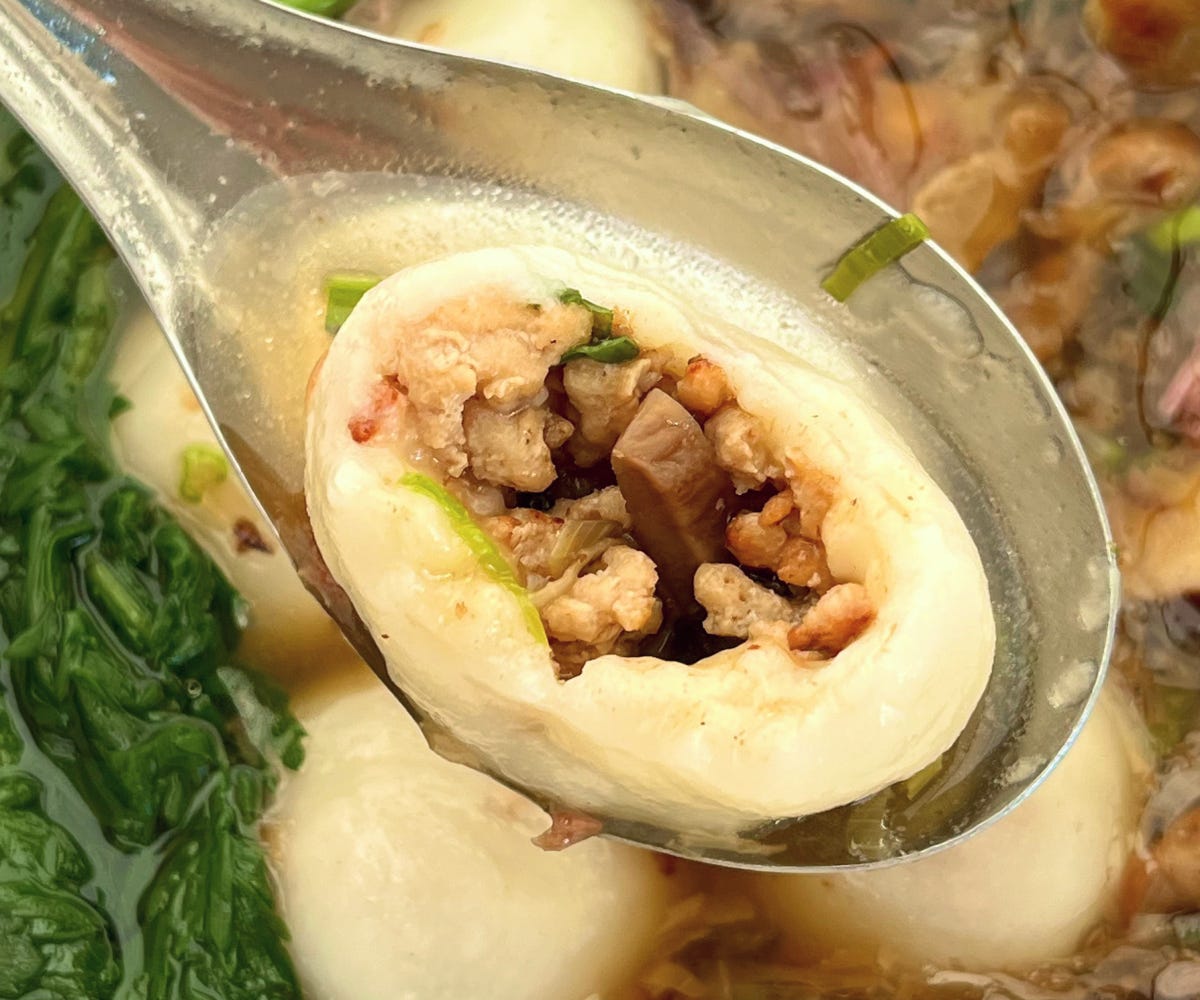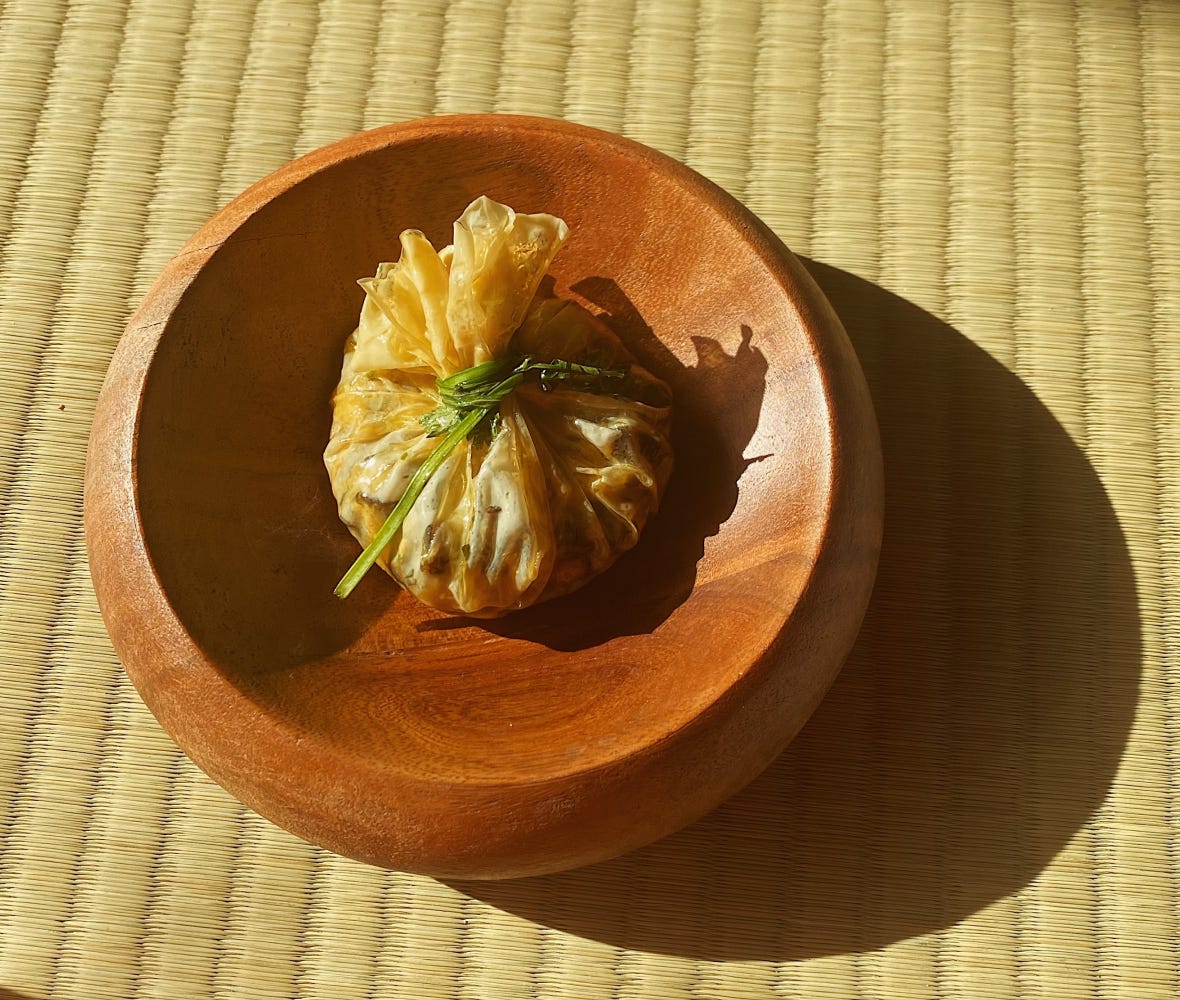元宵節快樂: Hakka Style Tang Yuan, a recipe for Lantern Festival
plus a quick introduction to Camellia Oil and a recipe from Zoey Xinyi Gong
This is Yun Hai Taiwan Stories, a newsletter about Taiwanese food and culture from a Taiwanese-American in NYC. It’s written by Lisa Cheng Smith 鄭衍莉, founder of Yun Hai Taiwanese Pantry and features guest authors from time to time. If you aren’t yet a subscriber, sign up here.
This month, I finally get around to posting travel content from 13 years ago and our Yun Hai team member Cat Yeh shares a recipe for Hakka Style Tang Yuan, just in time for Lantern Festival. This is a newsletter subscriber exclusive, i.e. for now, it’s not on our website, so do it up. Scroll all the way down for a Camellia Oil recipe contributed by TCM practioner Zoey Xinyi Gong and a quick primer on my favorite healthy oil.
One of my most formative trips to Taiwan was in 2008, fresh out of grad school. I was peak research-oriented (call it academic withdrawal), and engineered as many off-the-beaten path excursions as possible for me and my mom. My eyes were forever opened to the diverse microclimates, microcultures, and microcommerce of Taiwan, an experience that was absent from my previous visits to Taipei, mostly because I wasn’t yet astute enough to seek it out.

One of these “off-the-path” excursions was to Sanyi Township, a camphor woodcarving village a half hour away from Taichung (on the highway, wow so hidden). For people who live in Taiwan, this is an Established Destination™, but at the time, good English language information on the internet about Taiwan was so scarce, I was proud to have found it.
We really enjoyed our time there, with the wood carving, fragrance of camphor and tung oil, and the old railroad station (my mom shed a few tears inside, remembering her childhood). But, what we enjoyed most was the concentration of Hakka cuisine and culture. The most memorable meal of the entire 2008 vacation was an unassuming bowl of Hakka Style Tang Yuan, enjoyed on a wooden balcony overlooking the forest, with cool, moist air offsetting the hot broth, silky pork belly, floral chrysanthemum greens, and sticky rice dumplings. It was a cinematic gastronomic experience.
Lantern Festival is the last day of Lunar New Year festival; this year we celebrate it on Tuesday, February 15th. It’s customary to write a wish or a message on a paper lantern and release it into the sky, burning to ashes in the air. Though I certainly referenced this tradition in many a 2006-2008 grad school presentation (it was an MFA, okay), I have never had the opportunity to release one. Instead, I always celebrated by eating Tang Yuan 湯圓, or sticky rice dumplings, the customary food for celebrating Lantern Festival, suggesting togetherness and wholeness.

When Cat Yeh told me she was developing a recipe for Hakka Style Savory Tang Yuan as a different angle on Lantern Festival, I was immediately on board, hoping to recreate at least part of this long, lost experience from 2008.
客家鹹湯圓 Hakka Style Tang Yuan by Cat Yeh
Most commonly, tang yuan are either unstuffed or filled with a runny, sandy black sesame or peanut paste. Today, you can find flavors like black sugar boba, matcha, salted egg yolk, and Kit Kat. I personally prefer the good ol’ black sesame and peanut flavor; I am innately a savory over sweet person.
So today, I’m introducing a less globally known Tang Yuan style: the Old School Hakka Savory Tang Yuan 古早味客家鹹湯圓. The Hakka are Taiwan’s largest minority group and are an important part of the Chinese diaspora worldwide. Food in Taiwan is a melting pot of cultures and Hakka cuisine is one of the largest influences (hello, pork belly with preserved mustard greens 梅菜扣肉 or 梅干扣肉).
The key to making this a Hakka tang yuan is not the tang yuan dough itself, but the rich savory broth that it’s served in. Fried shallots, dried shrimp, pork, Chinese celery, Chinese chives, mushrooms, tong ho 茼蒿 (chrysanthemum) and a generous dash of white pepper are all important components to this dish. The QQ texture and semi-sweet flavor of the glutinous rice balls (either unstuffed or filled with equally umami contents) enveloped in an umami broth is an unquestionably artful combination.
Reward yourself this Lantern Festival with a bowl of old style Hakka tang yuan. I’ve provided recipes for plain (unstuffed) tang yuan, savory stuffed tang yuan, and the Hakka broth, so you can choose your own adventure. If the making of the tang yuan is too time intensive, you can buy the small red and white unfilled tang yuan in the freezer section of many Asian groceries. Just be sure not to get the ones filled with sweet pastes for this savory Hakka version.
Happy Lantern Festival 元宵節快樂, everyone!
Recipe: Basic Unfilled Tang Yuan
can make ahead and freeze
makes 12 tang yuan
Glutinous rice dough can be dry and difficult to work with. To make a smooth and elastic dough, we use a method where a small part of the dough is cooked and kneaded back in, known in the Hakka dialect as the Ban Ma method 粄(粿脆)法. In Hakka, Tang Yuan are called Ban Vien or Ban Rhan. The word Ban means “snacks made from glutinous rice flour,” “Ma” means mother, and “Vien/Rhan” means “round”.
Ingredients
1 cup glutinous rice flour
½ cup warm water
Instructions
Place the glutinous rice flour in a mixing bowl. Slowly add in the warm water while mixing.
The dough should not be wet or sticking to the bowl or your hands. If it is too wet, sprinkle a bit more glutinous rice flour and knead until smooth.
Cover and rest the dough while you bring a pot of water to boil.
Now to make the Ban Ma: When the water is boiling, pinch off a piece of the dough, roughly around 1” sized ball. If you’re doubling the recipe, you could flatten this into a disc so it cooks evenly.
Add the 1” dough ball into the water and cook until it floats to the surface.
Remove the cooked ball of dough and knead it back in with the uncooked dough.
Knead until the dough is soft and smooth (like a baby’s butt, as they say).
Divide the dough into 12 pieces of 18-20g each, and roll them into balls. Keep them covered with a damp cloth as you work, so they don’t dry out.
At this stage you can choose to cook the unfilled Tang Yuan to put into the Hakka broth or follow the next set of instructions to stuff the Tang Yuan with a savory filling. You can also freeze them (they can be cooked straight from the freezer).
To cook unstuffed tang yuan: Bring 6 cups of water to boil. Gently lower the tang yuan into the boiling water. Cook for about 4 minutes. When the tang yuan are just about to touch the surface of the water scoop them out with a slotted spoon. Finish cooking the tang yuan in the savory Hakka stock (see below) for the last 2 minutes.
Recipe: Savory Stuffed Tang Yuan
can make ahead and freeze
makes 12 tang yuan
In this recipe we make use of several of our savory pantry ingredients, but feel free to substitute with what you have.
Ingredients
12 pieces of plain unstuffed rolled Tang Yuan (see instructions above)
3 dried shiitake mushrooms (about 15g), soaked in warm water for 30 minutes and diced into cubes.
10g dried shrimp, soaked in warm water and minced
2 x 1” dried radish 菜脯, soaked in warm water and minced
3 oz. ground pork (or ground chicken)
1 stalk Chinese celery, washed and sliced into thin pieces
1 stalk scallion, washed and sliced into thin rounds
2 tablespoon Shaoxing wine
1 teaspoon Dong He Black Sesame Oil
3 tablespoons of Dong He Cold Pressed Peanut Oil
1 tablespoon Yu Ding Xing Glutinous Rice Soy Paste
½ teaspoon sugar
½ teaspoon white pepper
1 teaspoon salt
¼ teaspoon msg, optional
3 tablespoons of water
cornstarch slurry: 1 teaspoon cornstarch + 1 teaspoon water
Instructions
Heat 3 tablespoons of peanut oil until smoking.
Add in the dried shrimp and cook until fragrant (2-3 minutes)
Add in the ground chicken (or pork). Stir fry until golden and the juice of the meat evaporates (5-7 minutes).
Add in the chopped shiitake mushrooms and radish. Fry until golden.
Deglaze the pan with the Shaoxing wine and cook for 30 seconds.
Add in the sauce: sesame oil, sugar, salt, white pepper, soy paste, msg (if using) and 3 tablespoons of water.
Stir fry for 2 minutes.
Add in the celery and scallion and stir fry for 5-8 minutes, until softened.
Add in the cornstarch slurry.
The filling is done when it’s thick and no runny liquid is left. Place filling into bowl and let it fully cool.
To Fill: Using your fingers, flatten one Tang Yuan ball into a rounded disc. Spoon about 1-1.5 teaspoons of filling into the middle of the disc. Fold over the edges of the dough to enclose the filling inside. If it cracks just use your fingers to gently pinch together the dough. Then roll the tang yuan between the palms of your hand to even it out. Repeat process until all the tang yuan are filled.
To Cook: Bring 6 cups of water to boil. Gently lower the tang yuan into the boiling water. Cook for about 4 minutes. When the tang yuan are just about to touch the surface of the water scoop them out with a slotted spoon. Finish cooking them in the savory Hakka stock for the last 2 minutes.
Recipe: Hakka Style Savory Broth
2 full meal servings or 4 snack sized servings
Ingredients
Broth
20g dried shrimp, soaked and roughly chopped
6 pieces medium sized dried shiitake (about 18g), soaked in warm water for 30 minutes, stems trimmed and sliced.
1-½ cup Chinese chives or scallions, cut into ½” lengths
½ cup Chinese celery, washed and minced
1 lb tong ho 茼蒿 greens (chrysanthemum), washed and trimmed
0.7 lb pork belly, trimmed of skin and cut into quarter inch thick slices
2 medium sized shallots, peeled and sliced thin
1.5 teaspoon white pepper
Salt, to taste
¼ cup rice wine (Taiwanese or other)
5 cups pork or chicken broth (or water)
12 pieces parboiled Tang Yuan (unfilled or filled)
Garnish (all optional)
scallions
cilantro
½ reserved fried shallots or a teaspoon of Dong He Fried Shallot Oil
Yu Ding Xing Taiwan Pineapple Soy Sauce
Instructions
Heat camellia or peanut oil until slightly smoking in a wok or wide bottom skillet
If using fresh shallots, add in the and fry until golden.
Once the shallots are golden use a slotted spoon to remove the shallots and ½ the oil from the pot and reserve in a bowl.
Next add in the pork belly and stir fry until any juices are
evaporated and the fat is rendered (5-8 minutes).Add in the dried shrimp and fry until fragrant (1 minute).
Add in the shiitake mushroom slices and fry until golden (5-7 minutes). If you need more oil you can add some of the reserved shallot oil.
Add in the Chinese celery and fry for 1 minute.
Deglaze the pan with rice wine and cook for 30 seconds.
Add in 4 cups of pork broth or water and half of the fried shallots.
Add in the chives or scallion.
Add in white pepper and bring the stock to a boil for 5-8 minutes, so the flavors come together.
Add in the parboiled tang yuan and tong ho greens and cook for 2-4 minutes. You want to simmer the Tang Yuan in the broth for a bit so the flavors incorporate into the dumpling.
Taste and adjust seasoning and add salt, if needed. Serve in bowl and garnish with more fried shallots, scallions, a pinch of cilantro leaves, and a drizzle of chili oil and soy sauce.
If you make this or have any questions or insights please tag us @yunhaishop or #yunhaifensiclub on Instagram so we can repost!
Extra Special Contributor Recipe: Fried Yuba 豆皮Pockets in Camellia Oil by Zoey Xinyi Gong
Speaking of cinematic gastronomic experiences, don’t miss this recipe that Zoey Xinyi Gong developed for us using our cold-pressed extra virgin Camellia Oil: Fried Yuba Pockets in Camellia Oil. Zoey is a Traditional Chinese Medicine practioner and creates recipes that are nutritious and balanced for the body and the season. Check out more of her work at Five Seasons TCM.
Camellia Oil 苦茶油 is a Very Healthy Oil, well loved by nutritionists, TCM practitioners, and skin care enthusiasts around the world for its healthy fats and phytonutrients. It’s been called “China’s Olive Oil” (never heard of Olive Oil? It’s the Mediterranean’s Camellia Oil), a patronizing nickname that I do not love, but yes, it is similar to olive oil in its lipid profile with tons of phytonutrients. It has a high smoke point (!) so it is suitable for deep frying (yuba packets, for example). I love it because it’s like stir frying with olive oil, but with a lighter flavor more familiar to Asian cuisines.
The seeds are rare and hand harvested, so if you do use it, consume every drop! Your hair, skin, and nails will thank you.
Ok, I guess I should get started on those Tang Yuan now. The real question is, will it take more or less time than writing about them?
Lisa Cheng Smith 鄭衍莉
If you enjoyed this newsletter, please share it with friends and subscribe if you haven’t already. We email once a month, sometimes more. For more Taiwanese food, head to yunhai.shop, follow us on instagram and twitter, or view the newsletter archives. If you’d like to see a topic covered or have a burning question that needs an answer, leave us a comment.






